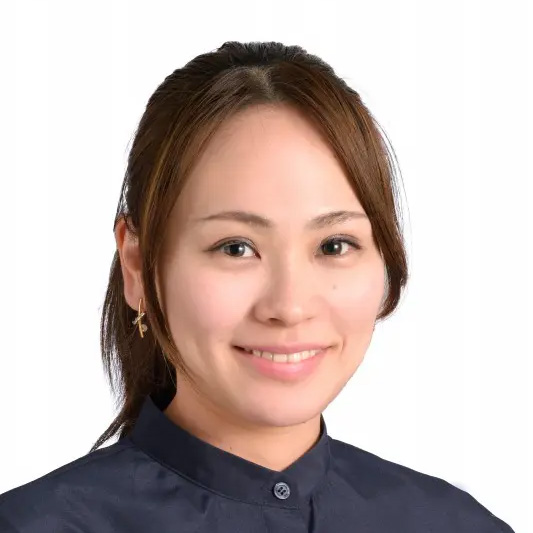IB UOI and Japanese Class for Elementary Students Vol.2 at CGK International School
At CGK International School, the Japanese language classes for our elementary school students incorporate essential units from MEXT-approved textbooks while utilizing various learning resources to engage in inquiry-based learning.
The previous issue was about how our students were developing their Japanese language skills through UOI (Units of Inquiry) from the International Baccalaureate (IB) program. To explain this, I will give an example of a Japanese class for 2nd graders.
This time, I would like to explain the UOI in Japanese class for 1st graders.
- Transdisciplinary themes: How the world works
- Central idea: How cars work and are structured has developed depending on the environment and needs of our lives.
The students conducted an exploratory study that flowed from
(1)The work and structure of cars (Functions),
(2)The reasons why cars have developed and changed (Changes), and
(3)The impact of cars on the environment (Causes).
The study also included reading an explanatory essay from the Japanese textbook unit "Jidosha Kurabe-Car comparison" and writing their own explanatory sentences about cars based on their research.


*This explanatory essay is about three automobiles that are familiar to students, and describes the cause-and-effect relationship between "work" and "manufacturing". The explanation is written in such a way that the reader will be able to relate the "work" and "manufacturing" of automobiles by using words that express reasons and purposes such as "for that reason" and "in such a way that".
Work and Structure
Japanese textbook unit "Jidosha Kurabe-Car comparison"
This study was conducted with the key concept of "function" in mind. First, students referred to encyclopedias and books about cars, or used cars they already knew as examples, and discussed what jobs various cars do and how they are built.
- Cabs take people far and wide to where they want to go.
- A road roller has a big roller in front.
- An excavator has a big shovel-like device to move dirt and other materials.
We shared various discoveries and information.
Each time, I repeatedly asked, "What is it made for?” The students were then able to respond naturally, using the words "for that reason.
When they opened the textbook and read the text, they were able to immediately find the important words "for that reason," and were able to relate it to the "work" and "construction" of the three automobiles.
There was no need to take the time to copy the textbook words into notebooks or worksheets or to listen to the explanations written on the board in order to decipher the structure.
Thus, through natural conversational interactions, they unconsciously conceptualized conjunctions and learned to use them in a variety of situations.
As a review activity, the students chose a car they liked and wrote down what they understood about its "work" and "construction". Each student was able to realize that each car has a job to do and is ingeniously designed for that purpose.





Comparison of the past and the present
In the next lesson, we asked the students the following questions, regarding the cars they had examined.
- Have these cars been around for a long time?
- What are the differences between the cars of the past and the cars of today?
The students deepened their learning by sharing what they already knew and the ideas they came up with, while being aware of the key concept "change".
For the content of the study here, we decided to go on a field trip to the NISSAN GALLERY as a related activity.
NISSAN CALLERY: Field Trip
The purpose of this field trip was to explore the following
- Why have the shapes and mechanisms of cars evolved?
- How have the shapes and mechanisms of cars developed?
On site, the staff provided a lot of information about the differences between e-POWER and gasoline-powered cars, the history of cars, how sports cars work, how engines work, and so on. It was very impressive to see the students frantically taking notes and copying the models of old cars on display, and the staff was surprised at how serious they were. When they actually rode in the cars, they were excited saying things like: "There is a desk stand here!” and "There is a ramp coming out of the back to make it easier for people in wheelchairs to get in!” It was an opportunity to notice new perspectives.
Students learning Japanese as an Acquisition Language (JAL) also participated in the field trip and wrote essays about the features of the cars and what they learned.
In their reflections after the field trip, the words "comfort," "safety," and "environment" naturally emerged from the students. They seemed to have been able to learn in-depth about the devices that allow everyone to enjoy long trips without getting tired, how the car was structured with safety in mind, and the mechanisms of the car that continues to evolve with environmental issues in mind.
*The learning here will serve as the basis for ideas for the "cars of the future" that the students will design later.






The Relationship between Cars and the Environment
After learning about the "changes" in cars during the field trip, the students then explored the "causes" of these changes. They discussed what can be done to reduce car exhaust emissions.
The students, who had already learned about "global warming" and "air pollution" in English during their homeroom UOI, had an opportunity to think about the environmental problems caused by cars in Japanese, while making connections to what they had previous learned.
In addition to the electric and hybrid cars they learned about on the field trip, they were able to learn for the first time that cars powered by hydrogen and green beetle oil are being developed to address environmental issues.



Designing the Car of the Future
Finally, to wrap up their exploration, the students set about inventing their own original car of the future.
They expressed their ideas in writing and design, taking into consideration the work and structure of a car from the perspectives of "comfort," "safety," and "environment," which they had noticed during "The Relationship between Cars and the Environment".
In this UOI, we have supported student's learning by focusing mainly on IB learner images: Knowledgeable, Thinkers, and Inquirers. However, in the process of thinking about this car of the future, the students also thought about people with disabilities in eyes, ears, and limbs, as well as the needs of small students, so the activity naturally allowed them to practice the characteristics of Caring.
Below are six of the student's ideas.
[Case Study 1] Supercar
The student has invented the garbage truck of the future. That garbage truck is unmanned and uses electricity to fly around the world to collect garbage. This car will go through the sky because it takes time to go through towns.
Since it runs unmanned, two hands behind the garbage truck will collect the garbage. The reason the student chose to make it unmanned is because the student thought, "It would be a hassle to hold the garbage bags.Also, the seats that used to carry the driver can be used to put trash and other things, allowing for a spacious interior space. This was inspired by a Japanese language textbook unit, "Jidosha Kurabe," which describes a truck with a wide bed that can carry a large number of items.
The design was conceived from a safety and environmental perspective, as well as from the perspective of the workers.


[Case Study 2] A car that can accommodate 12 passengers
The student designed a car with eight tires so that it can support 12 passengers. For blind people and small students, the car was invented with the idea of universal design, with steps that open when the doors are opened and guide blocks attached to them. This idea was tied to the UOI that they learned in English about building access and structure for people with disabilities.
Also, from the perspective of environmental issues that they learned about on our field trip, the student encouraged people to move with water and invented a way to cool the earth with the water that is discharged.
With water servers, mattresses, a kitchen, and a trunk that can hold a lot of stuff, even a large group of people can stay as comfortably as in a camper.

[Case Study 3] Friend Car
With the environment in mind, the student wrote: "Green Beetles produces oil when exposed to sunlight, so we use it to power the car" and other explanatory sentences.
Also, remembering the characteristics of the body of an electric car that we learned about in the field trip, the student designed the front side of the car without a hole for air to pass through.
In terms of safety, the car's navigation system, which also works with sign language, will automatically head to the location you tell it to go. The student also added Braille blocks so that the elderly and blind people can get in and out of the car safely.
From the viewpoint of comfort, the student incorporated various ideas such as large windows for a nice view, automatic windshield wipers when it rains, and a TV.


[Case Study 4] The Do-It-All Car
The student invented a car that runs on hydrogen and e-Power, taking care of the environment. With hydrogen, the car produces almost nothing but water, and "When you use e-Power, you use gasoline when the e-Power battery runs out, but in the meantime the e-Power will be recharged.
On the safety front,
- Never puncture tires.
- The vehicle body is made of various materials such as steel, charcoal, and cardboard, so it does not shake even when it bumps into a wall.
- Wipers that are automatically triggered by sensors when it rains.

[Case Study 5] The Earth Car
This car users the e-POWER technology that the students learned about in the field trip to reduce exhaust emissions. Furthermore, the car has a garden and park spread out on top of it, aiming to reduce carbon dioxide emissions.
In terms of safety, the car has a scanning function to prevent thieves from stealing it. In addition, to ensure that the elderly and babies can continue to ride comfortably and safely, the student has incorporated ideas for a robot to assist them and a mechanism to prevent seatbelts from unbuckling on their own.

[Case Study 6] SANISA
The student invented a camper that can also be a submarine. The student was able to develop the idea by referring to a familiar amphibious bus, "Skyduck Yokohama".
Its job is to find families for people who have been separated from their families in the mountains.
The student incorporated a variety of furniture and elevators to make them comfortable, and the student also devised the "construction" so that they could safely play their favorite game of soccer.
In addition to the illustrations, the student used concrete numbers for length, speed, and number, and were able to write a text that readers could easily visualize. Furthermore, the student wrote sentences such as, "The iron bar is there to keep you safe. Even if one tire goes flat, we will be safe because we have another tire. I was able to write editorial sentences with additional reasons, such as "We are safe because we have iron bars.


The other idea that several students adopted was Subaru's "EyeSight".
From a safety point of view, a camera attached to the car was used to automatically stop the car in case of danger. However, while borrowing the idea from Subaru, some students came up with the idea of changing the name of the car to "Leucite" by adding a camera to the car.
In addition to the above examples, other ideas included a car with a camera on top that automatically moves when a person smiles (like a face ID on a cell phone) and a car that uses gasoline and water together while diluting the gasoline with water to reduce exhaust gas emissions.
In this way, the students were able to invent original future cars from various perspectives, recalling familiar objects, tying them to existing learning, and stimulating their creativity. During the presentation time of their works, the students also aimed to acquire ATL (Approaches to Learning) communication skills, and each one of them was able to speak persuasively in response to questions, giving concrete examples to convince the audience of their ideas. The presentation activity was a glimpse of the students' ability to speak confidently and debate.



Reflection
The activities in this UOI allowed us to practice the following characteristics; "Knowing", "Thinking", "Inquiring", and "Caring".
In addition, the ATL (Approaches to Learning) aimed to help students acquire Social Skills, Thinking Skills, Communication Skills, and Information Literacy. As a result, we were able to accomplish the following
- Reflect on their own learning
- Create with new perspectives
- Create products and solutions by combining knowledge, conceptual understanding, and skills
- Make connections between units and subjects
- Express opinions clearly, logically, and respectfully
- Listen to others actively and respectfully
- Organize ideas and information into a form that is easily understood as an explanation
In addition, the UOI activity could naturally cover the following, which are defined as "Evaluation criteria in the Japanese Language Arts Courses of Study from MEXT for first graders".
- To select a speaking theme from what pupils are familiar with or their experiences, and to recall necessary events. ("Consideration of composition, formation of ideas")
- Concentrate on what the speaker wants to tell you and what you want to hear so that you do not lose sight of what the speaker wants you to hear. ("Grasping the structure and content")
- To write consistent sentences or paragraphs with attention to word or sentence connections. ("Formation of ideas, description")
- To connect the content of the text with one's own experiences and to share one's impressions. Share them with others. (”Formation of thoughts”)
- Understand how to use long vowels, and geminate sounds (double sounds), the particles "ha", "he" and "wo", punctuation, and the use of the key (「」) in sentences and texts. In addition, students should be able to read and write hiragana and katakana, and know the types of words written in katakana and use them in sentences. ("Knowledge and Skills")
- In Grade 1, to read Chinese characters that are allocated to Grade 1 in the annexed “List of Chinese Characters Classified by Grades” (hereafter referred to the “Classified Chinese Characters”) and to learn to write them in a step-wise manner and use them in sentences or paragraphs. (”Knowledge and Skills”)
In this way, in Japanese classes, students are broadening their perspective beyond the content of the textbooks and cultivating their writing, reading, speaking, and listening skills while relating them to existing studies and UOI.
We will continue to strive to create classes that are not restricted to textbooks, and that ensure the acquisition of knowledge and skills that should be cultivated at each grade level, while taking advantage of the interests of each individual child.
We will continue to create a learning environment that allows each student to explore their interests and passions, whilst ensuring that their learning is not confined to the content of textbooks alone. We will also help them acquire the knowledge and skills outlined in the elementary school curriculum guidelines as set by MEXT.
Author Profile
-

-
Sayuri - IB PYP/MYP Japanese Teacher (Japan)

IB PYP/MYP Japanese teacher of CGK International School.
Master's degree in Educational Technology, Western Michigan University.
While conducting research in her field of expertise to review ICT education in Japan and the curriculum review of the School of Education, she has also published research papers with a German publisher.
Two years teaching Japanese at Western Michigan University and five years teaching Japanese to Japanese students at a school in New York City.





















